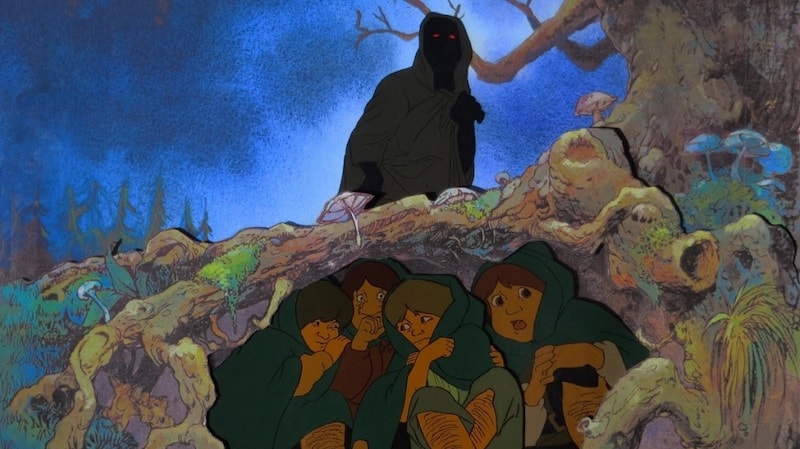An In-Depth History of Ralph Bakshi’s ‘The Lord of the Rings’
Remember when they let the guy who made ‘Fritz the Cat’ adapt ‘The Lord of the Rings’? The ’70s were wild, man.

Welcome to The Queue — your daily distraction of curated video content sourced from across the web. Today, we’re watching a video essay on animator Ralph Bakshi and his 1978 take on The Lord of the Rings.
It is difficult to think of The Lord of the Rings as “unfilmable” in the wake of Peter Jackson‘s trilogy. It’s the definitive cinematic word on J.R.R. Tolkien’s fantasy epic and likely what most fans picture in their heads when they think of Middle-earth.
For many years, all attempts to bring The Lord of the Rings to the big screen resulted in abandoned scripts, unproduced concept art, and unfulfilled directorial dreams. Before Jackson’s movies, only two cinematic adaptations saw the light of day. Notably, both were animated — an elegant workaround to portraying setpieces and worldbuilding too expansive and costly to realize in live-action.
With my apologies to the Rankin-Bass television special, Ralph Bakshi‘s 1978 The Lord of the Rings is by far the better of the two and more compellingly infamous. The animated feature was intended as the first part of a two-picture deal, though a second film never materialized. As the video essay below is keen to note, Bakshi is one hell of a character. He’s an icon of the counterculture scene, and one of the few opponents to Disney’s monopoly on American theatrical animation.
Bakshi’s The Lord of the Rings has a well-deserved reputation for being absolutely buckwild, a mixed media mishmash of paint-overs, colorized xeroxes, pseudo-solarization, and rotoscoping. The film persists through the years as a cult curio. However, specifics about its creation, strengths, and weaknesses are less discussed. So in the interest of righting that wrong, here is a video essay that gives Bakshi’s adaptation its due.
Watch “An Exhaustive History of Ralph Bakshi’s Lord of the Rings”:
Who made this?
This video essay on the history of Ralph Bakshi’s The Lord of the Rings is by Canadian video essayist Dan Olson. His video essay channel, Folding Ideas, tackles narrative theory and the mechanisms of storytelling in all its forms. You can follow Olson on Twitter here. And you can subscribe to Folding Ideas on YouTube here.
More videos like this
- Here’s an introduction to the cinematic world of Ralph Bakshi that casts a wider net. It’s worth checking out if you’d like to know more about his history as a Hollywood rebel and counterculture icon.
- In a 1988 interview, Bakshi argued that cartoons based on toys are bad for kids (“of course it hurts kids watching that stuff…there’s no love involved!’). Bakshi’s inclusion in the segment (populated with lobbyists and concerned parents) is surreal … which is on-brand.
- You really can’t go wrong with Folding Ideas videos, but this one on Suicide Squad and the art of editing is unhinged and incredible.
